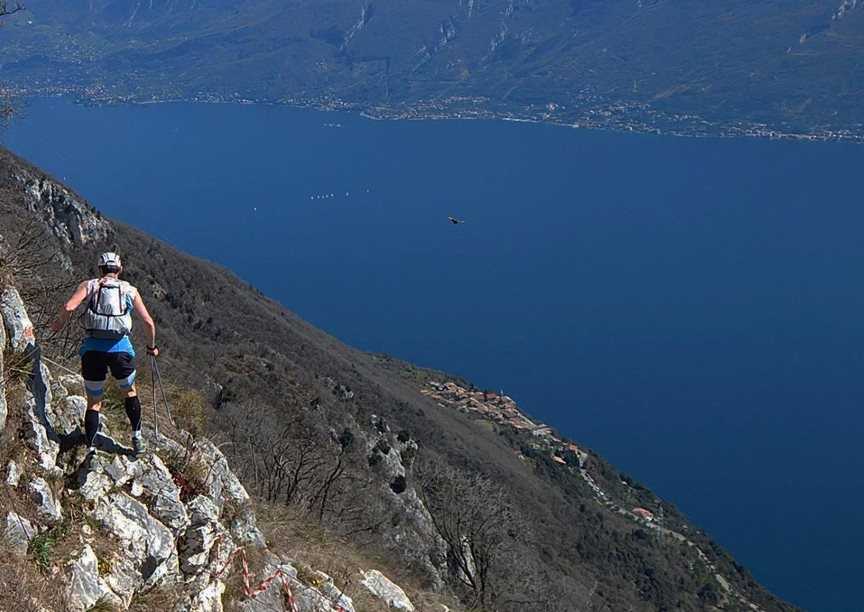Last updated: 06-Nov-18
By Luke Jarmey
Roddy Riddle used to cycle internationally until fate intervened. He was diagnosed with type 1 diabetes. But he refused to give up and has now carved himself a place in the ultrarunning community.
Q. Tell us a bit yourself, who is Roddy Riddle?
A. I am an ex-international cyclist who was diagnosed with type 1 diabetes at the age of 40. I am a husband to my wife Lynn, and we have 3 brilliant kids, Alasdair aged 11, Isla aged 9 and Findlay aged 7.
Type 1 Diabetes
Q. Can you briefly summarise what type 1 diabetes is?
A. Type 1 diabetes is when your pancreas stops producing insulin which is required to get glucose to the muscles. Type 1 diabetics get insulin from injecting or from an insulin pump which I use.
Q. When were you diagnosed?
A. I was diagnosed just over 7 years ago at the age of 40.
Q. How did the diagnoses affect your active life – you’re an ex-international road cyclist?
A. When I was first diagnosed, type 1 diabetes and doing sport was not really recommended. I didn’t want to accept that, given my sporting background, so I bought a treadmill and put it in my garage and learnt about what happened to my blood glucose levels during different types of effort but within a safe environment. If I dipped too low, I could just go into the house and have it treated. This gave me the confidence to then go running in the hills.
Q. Do you use special techniques/equipment to manage your diabetes when strenuously exercising?
A. I have an Animas Vibe insulin pump, which is continuous glucose monitor (CGM) compatible. I have a CGM sensor attached to me with a cannula that speaks to my insulin pump via Bluetooth. When I am on the move, I press a button on my pump and I can see what my blood glucose is but more importantly what my blood glucose trend arrows are doing. If the arrow is pointing down, I need to take carbohydrates on-board. If the arrow is pointing up, I need to take insulin on-board via my pump. If the arrow is facing straight, I’m doing it right. Having CGM means I don’t have to stop and do finger pricks to get blood for my blood glucose monitor so much.
Your experience of ultra running
Q. How long have you been doing ultras?
A. Just since 2013.
Q. How did you first get started doing ultras?
A. I got started as I wanted to raise awareness for type 1 diabetes, which I knew Hee Haw about when first diagnosed. So, I entered the Marathon des Sables and along the way raised 26K for two diabetes charities.
Q. When did you do your first ultra race?
A. April 2013, the Marathon des Sables.
Marathon des Sables
Q. How did this go for you?
A. I finished 273 out of 1050 fellow competitors, but more importantly I finished 1st Roddy Riddle.
Q. How did you manage your diabetes during the event?
A. Having CGM helped a lot, and when I downloaded the CGM readings when I got back, I saw that during each stage I ran with my blood glucose within the range a person without type 1 diabetes. That was great to see.
Q. Tell us a bit about your kit for the MdS, what worked and didn’t work?
A. I decided to eat exactly the same food every day as I treat food as fuel; in fact I’m very much a Groundhog Day eater. Best thing for me was my Sandbaggers gators, with being diabetic the risk of getting blisters was severe. If I get infected blisters, in a worst case scenario it can lead to amputations which is not ideal.
Top Tips
Q. What tips can you give fellow runners with diabetes or other potentially limiting conditions?
A. Don’t let having a chronic illness stop you achieving your goals in life, my motto is “Rule type 1 diabetes, don’t let it rule you”.
Q. What tips would you give to someone doing their first ultra?
A. Pace judgement and correct fuelling are by far the most important factors. Getting the correct footwear is also important.
Salvation time
Q. Who or what has been your biggest help in doing ultras?
A. Age! As the older you get, the better you get at pace judgement. Who? The people who give up their valued time to marshal and organize ultras, who put a smile on your face at checkpoints etc.
Q. Have you made any significant sacrifices to complete ultras?
A. I did the 53 mile Highland Fling 2014, and 18 miles in, my cannula ripped out. I had to decide – do I retire or run the last 35 miles with no carbs and only on water. I didn’t plan on retiring, so kept an eye on my CGM and finished 173 out of a 1000 runners. I was doing what has never been tried before.
Training
Q. How do you train for an ultra?
A. I recently did the 72 miles Great Glen Ultra, where I finished 3rd, on doing no more than a total of 28 miles split over two sessions in a day. If I do too many miles, I get injured which is frustrating. It’s about doing what works for each individual.
Q. Does your nutrition plan change significantly when training?
A. Not really, I just make sure I’ve got enough carbs onboard to help reduce the risk of hypo when out training.
The Future
Q. Which races are you currently training for?
A. March 11th 2016 I’ll be on the start grid of the 350 miles 8 day 6633 Ultra in Canada.
Thanks Roddy!
RUN WELL!




